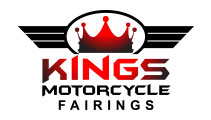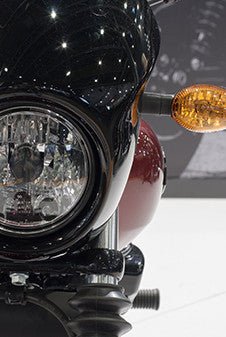News » how do I pop a wheelie
-
How to Pop a Wheelie on a Motorcycle
How to Pop a Wheelie on a Motorcycle by KingsMotorcycleFairings.com

You know how to ride a motorcycle, but do you know how to pop a wheelie? A wheelie is one of the most famous bike stunts to execute for riders and for spectators to witness. To some riders, performing stunts on a motorcycle can be extremely intimidating (which it should be, since they can be dangerous). However, with proper guidance and control you can learn how to perfect the skill of a wheelie over time in a safe way. Now, there are a number of different variations and techniques to performing a wheelie, so to start, our team at Kings Motorcycle Fairings highly recommends learning how to first master the most basic, “power wheelie”!
Before you start
Motorcycle stunts, including the power wheelie, can be very dangerous, so we highly recommend learning this stunt only if you are already an advanced or experienced motorcycle rider and by doing so in a secluded and safe area. We also want to emphasize the importance of wearing a motorcycle helmet & protective gear at all times when riding, but especially when learning a new skill on your sport bike. In addition to the regular protective gear you consistly wear on the street, it certainly wouldn't hurt to be extra precautious by adding a little extra gear (such as knee pads, elbow pads and even ankle pads). Just like learning to ride a bicycle for the first time as a kid, it is likely that you will be falling frequently before you get the hang of it.
Step 1
Put it in 1st gear! Power wheelies are much easier when starting off in first gear, it's all about using acceleration to assist the bike in pulling the front wheel upward. The main objective to learning how to perform a wheelie is finding the right speed. We recommend starting the learning process by using speeds no higher than 10-15 mph. Going too slow can result in not having enough force to pull your front wheel upward. Going too fast can result in loss of control and can quickly put you in an unsafe situation. The key is to find a constant speed in-between 10-15 mph that will allow you to successfully find your balance point. Once you have found a good speed, you are ready to take on step 2!
Step 2
When you are ready, drop your speed and then open up the throttle and accelerate! This will help give you more power and a kick when you hit the gas. As you are doing this, pull the front wheel of your bike upward. If you feel as if you are going too far back, slightly hit the back brake to prevent yourself from flipping backwards. When you hit the rear brake, keep in mind that this action will cause your front wheel to come back down, so it's very important to land your front wheel as straight as possible. If your front wheel does not land straight or you land too suddenly, it can cause your bike to shake on impact resulting in a crash and possibly injuries.
Step 3
This step is about maintaining your balance during the power wheelie. When your front wheel is in the air it is important to find your balance point in order to be in the wheelie for a longer period of time. Lean back on the rear side of the bike, making sure the balance point of you and your bike is in the center. Pro Tip: Any sudden tipping forward or backward can interrupt your point of balance and result in the bike tipping over and damaging your motorcycle fairings (breathe & remain calm).
Step 4
When you are ready to end the wheelie, use your rear brake (like we mentioned earlier) to bring the front end of your sport bike back down to the pavement. Again, keep in mind that you will want to hit the brake slowly to ease your way back down. When you hit the brake too hard it can cause you to lose control resulting in you and your bike falling over. Pro Tip: You can slightly increase your throttle as the front end is coming down to help balance out your movements.
Lastly, motorcycle wheelies are an extremely fun but dangerous aspect of motorcycle riding. It is very important that you remember to be extremely aware of any other vehicles on the road and be personally safe by wearing your motorcycle helmet & protective gear. Kings highly recommends that you always practice in a secluded area free from other vehicles!
The team here at KingsMotorcycleFairings.com hope that you found this article helpful. If you have extra time, we’d love for you to visit our online store for the largest selection of quality Motorcycle Fairing Kits, Helmets, Gear & Accessories!




kingsmotorcyclefairings.com